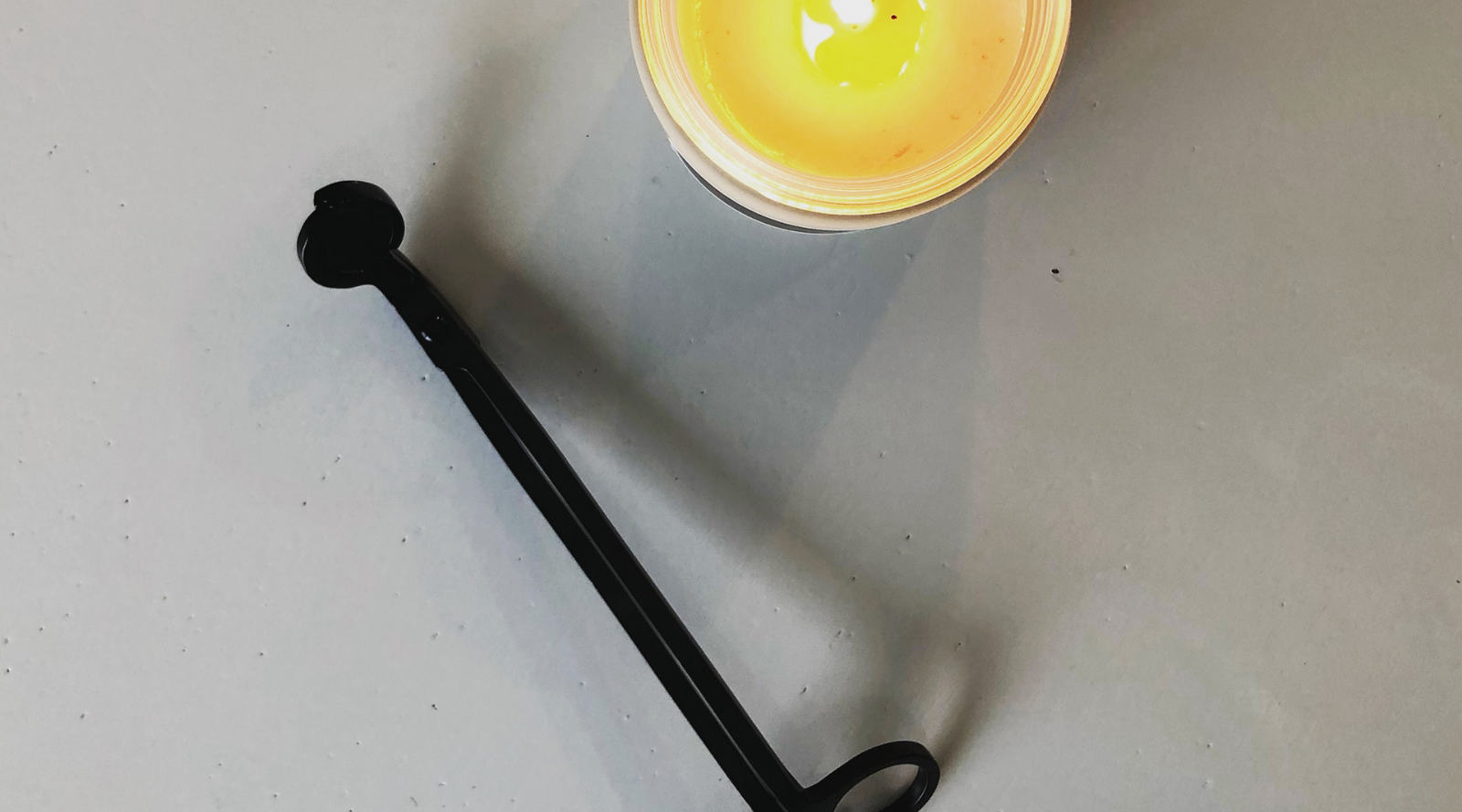Why do I need to trim my candle wick to 1/4"?

Packed into every single one of our candles, you'll see this little guy, the Candle Care card.

And the very first sentence says, Before each burn, trim your wick to 1/4". Have you ever wondered why candlemakers say this and IF it actually matters? I hear a lot of people say, "Oh, that doesn't really matter, just light it." Like, a LOT of people. But the fact is, it matters a lot. And here's why.
WICK SCIENCE, PART 1
A candle's wick is the key player to making candles burn properly. It's the central plumbing that sends melted wax vapor to the flame using capillary action. (Learn more about capillary action here.) When you first light your candle, the heat of the flame melts the wax at the top of the candle. It then forms a melt pool. Once the melt pool forms, the liquid wax is then drawn to the flame by the capillary action of the wick. Fun Fact: paper towels also work by capillary action, which is why you hear paper towel commercials talk about "wicking" so much.
WICK SCIENCE, PART 2
When the liquid wax hits the wick, a chemical reaction occurs between the vaporized hydrocarbons and the oxygen in the air. Next time your burn a candle, look the flame. You'll notice that near the wick, the flame is almost invisible, and a yellow zone surrounds the wick. It is right there near the wick that the wax vapors are breaking down, releasing hydrogen. As a result, long unsaturated carbon chains are formed, and these carbon chains are actually tiny little particles of soot. It is these soot particles that burn and release the yellow light of the candle's flames.
If there is enough oxygen and not too much wax vapor being created at the wick, the soot particles are completely burned up in the flame, and the candle releases only heat, light, water, and carbon dioxide--no soot. A clean burn, so to speak. But, if there's too much wax vapor and not enough oxygen, the flame won't completely consume the soot, causing the wick to kick off soot and create that mushroom shape you sometimes see at the end of your wick. If you notice this mushroom shape after burning your candle, guess what you should do?
You guessed it: trim your wick to 1/4" before burning your candle again. You can use scissors to trim, not a thing wrong with that. With some container candles this may be tough once the wax starts to burn down, as you may not be able to get your scissors inside to trim properly. Which then results in trimming your wick TOO low, creating new problems for you, or the worst case, breaking your wick off entirely (been there, done that eek). To avoid all of this drama, you also can use a tool specially designed for the job, that will fit into your containers and get you a 1/4" wick every time: a wick trimmer. Of course my favorite one is matte black, because I have a, ahem, healthy obsession with the color black. You can get your own matte black wick trimmer here.
CANDLE SCIENCE, PART 3
So, the reason trimming your wick to 1/4" matters is so that you have a clean burn - no soot in your air or all over your walls and pillows and things - and so that your candle wick uses the wax in your candle efficiently. Efficient wax use means more hours of burning time...so you can enjoy your candle for hours and hours & get more for your money! And it just so happens that 1/4" is the scientifically perfect length for a properly-sized candle wick to have just the right amount of oxygen to wax vapor ratio for that clean, efficient burn. Trim your wick to 1/4" every time.
Happy Burning.
![]()




